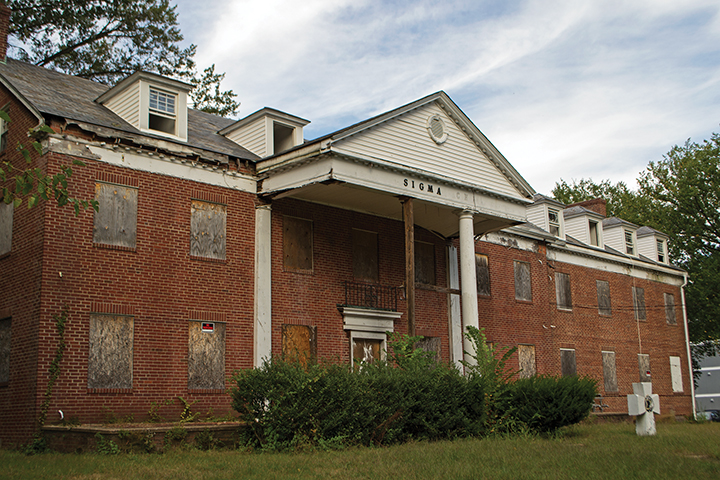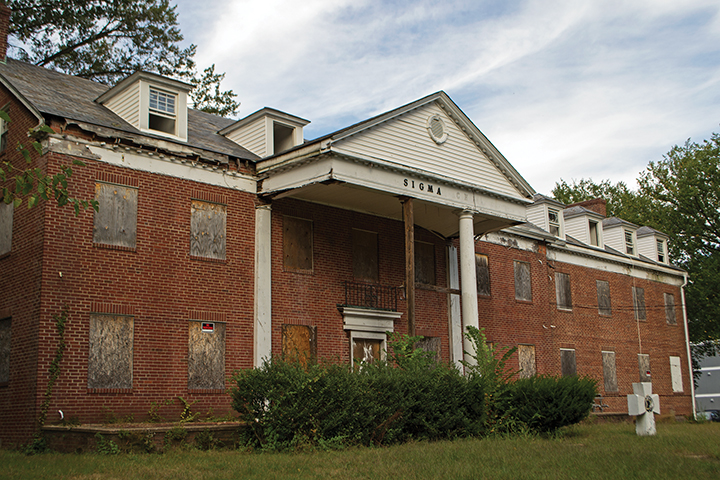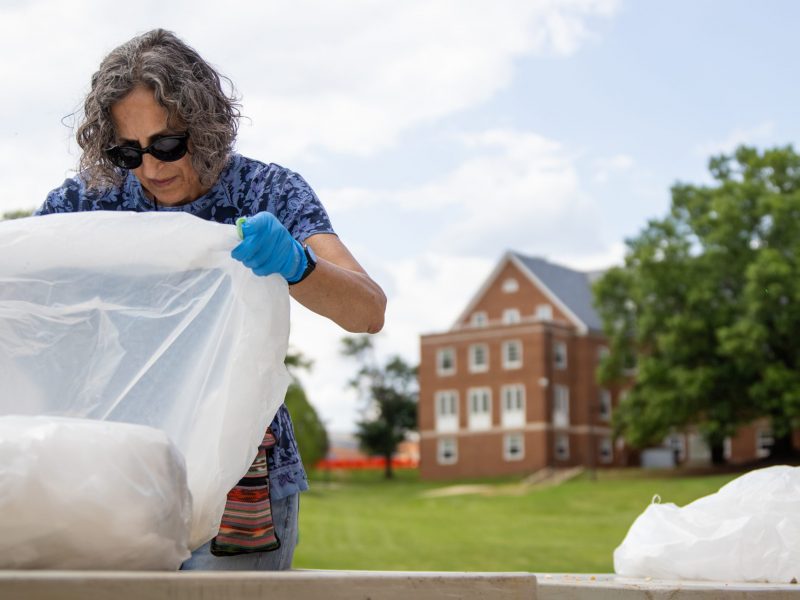It looks like it could be a Halloween haunted house, with its boarded-up windows, peeling paint and yard full of weeds.
The old Sigma Chi house sits on Norwich Road, squarely between Dickinson Avenue and Princeton Avenue. Its rooms have remained empty since 2002, but the house’s legacy lives on as one of the most controversial pieces of property in Old Town.
The house was built in the early 1940s for the fraternity, said Scott Werber, 1986 alumnus, president of the chapter alumni group and chapter adviser.
The fraternity members, including Werber himself, lived happily there for years. It was a house all their own, unlike the university-owned houses on Fraternity Row.
But the chapter, once praised as one of the national organization’s most exemplary chapters, fell on hard times. In 1999, the fraternity failed safety and fire inspections, and in December 2001, the fraternity lost its charter for violating university policies.
The house was left behind. The organization still owned it, but without a presence in College Park, it was difficult to maintain. In 2004, a fire consumed the building, causing additional damage.
And now, the house sits alone.
“Just about everyone in College Park would like us to do something to it,” Werber said. “They’re probably under the impression that we’re just sitting on our butts.”
But it’s not a choice, Werber said. The property has sat in a sort of legislative limbo for years, and it’s prevented them from being able to fix up the house.
Old Town College Park is an area of the city roughly marked by the edge of the campus, Calvert Road, Yale Avenue and Columbia Avenue — and within its boundaries sits the house. The county officially designated the area as historic in 2008 in a controversial decision, and the state designated it historically significant in 2012.
The area earned this status because county officials and some area residents believed the area and its architecture help define the character of the district. The Prince George’s County Historic Preservation Commission judges specific houses in the district as contributing more to the historic character of the area than others, and the owners of those homes face heavy restrictions when it comes to making any repairs.
“Technically, [the Sigma Chi house] is condemned, so we wouldn’t be able to let it out, and we can’t do anything to the outside,” Werber said. “We would prefer not to part with the property, so we’re just continuing to pay the expenses to maintain the property hoping something might change.”
Chapter members have been fighting to tear it down and build a new house in its place, but so far, they haven’t had any success. The outside is too architecturally significant to the area, officials told them, and tearing it down would be too disruptive to the local character.
“Residents wanted the building to stay the same exterior,” said Kathy Bryant, president of the Old Town Civic Association. “People would prefer saving the building because we’re a historic district, and they want to make sure it fits with the neighborhood.”
Werber said the interior is so scarred by water, fire and decay, it would cost the fraternity more money to renovate it than it would to tear it down and build a new structure. And with the previous renovations, it’s also not the same house it was when it was built during College Park’s development boom in the 1930s and ’40s, he said, so the historical significance is little, if anything.
As the fraternity grew, members expanded the house. In 1955, the fraternity applied for permits to build an addition and increase the number of residents from 32 to 43. Other changes were made to house, Werber said, such as deviating from the original architecture with a new roof in the 1990s.
Fraternity members are at an impasse, Bryant said, as they have been for the better part of the past decade. The house is still cited for city code violations such as excessively long grass, and the fraternity still pays for them.
“We would have done something a long time ago if we could,” Werber said. “We would like to make it look nice and have people walk by and say, ‘That’s a nice building,’ instead of, ‘Hey, look at that eyesore.’”
And so, the house sits.
The old Sigma Chi house, located at 4600 Norwich Road.
The old Sigma Chi house, located at 4600 Norwich Road, has fallen into disrepair since its abandonment.





